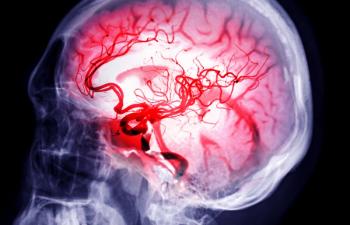
Treatment Options for Hemophilia A and B
With gene therapy, anti-tissue factor pathway inhibitors, and RNA interference therapy targeting antithrombin, there are many new options that will be available for the patients impacted by hemophilia.
Hemophilia is a rare disorder in which the patient’s blood is not able to clot in a normal fashion, due to a lack of clotting proteins. Such patients are therefore at a risk of bleeding longer than others, especially after a cut or wound. This could be even more urgent for internal bleeding, which could become a major crisis for such patients with low levels of clothing factor proteins. Therefore, it is very important for patients with hemophilia to be treated effectively, both chronically and acutely when needed.¹
There are various types of hemophilia, but the major types are hemophilia A and hemophilia B. Hemophilia type A is a disease in which there is clotting factor VIII deficiency. Hemophilia B, on the other hand, is a type in which factor IX is deficient. Hemophilia B is also sometimes called the Christmas disease, named after a 5-year-old boy who was first diagnosed with this type of hemophilia in 1953. Hemophilia A is more common than hemophilia B, which occurs in 1 in 25,000 male human births. Hemophilia A occurs 1 in 5,000 male human births. Hemophilia C, also known as Rosenthal Syndrome, is caused by low levels of factor XI, which is another protein needed for clotting the blood. This type of hemophilia occurs in 1 in 100,000 individuals.²,³
When it comes to treatment for hemophilia, there are several types of clotting factors that are key for better prognosis. One of the most effective ways of treating hemophilia includes the infusion of these clotting factors. The clotting factors are usually made from donated blood, as well as clotting factors made in a laboratory, which are also called recombinant clotting factors.¹
The 2 main types of clotting factors that are available for these patients include plasma-derived and recombinant options. Recombinant factor VIII products include Adynovate, Advate, Eloctate, Esperoct, Afstyla, Kogenate, Kovaltry, NovoEight, and Xyntha. Emicizumab (Hemlibra) is an example of recombinant humanized factor Xa- and X-directed monoclonal antibody. Hemofil M, on the other hand, is a human plasma-derived immunoaffinity-purified factor VIII. Human plasma-derived concentrates that contain factor VIII and Von Willebrand Factors include Alphanate, and Humate-P.⁵
Sevenfact (coagulation factor VIIa recombinant-jncw) is one of the most recently FDA-approved factors for hemophilia A and B, approved for adults and adolescents 12 years and older. For mild to moderate bleeds, the recommended dose is 75 mcg/kg every 3 hours, until hemostasis is reached. For severe bleeds, the recommended dose is 225 mcg/kg followed, if necessary, 6 hours later with 75 mcg/kg every 2 hours.⁶
With gene therapy, anti-tissue factor pathway inhibitors, and RNA interference therapy targeting antithrombin, there are many new options that will be available for the patients impacted by hemophilia. More than 200,000 individuals live with some form of Hemophilia. However, new data indicate that many individuals may have been underdiagnosed and, at a global level, there could be more than 1.1 million individuals with this disease. However rare this type of disease may be, many of these patients will soon have various treatment options that they can try for the best possible outcome and improving quality of life.⁷,⁸
References
1. Hemophilia. Mayo Clinic. August 29, 2023. Accessed May 7, 2024. https://www.mayoclinic.org/diseases-conditions/hemophilia/diagnosis-treatment/drc-20373333
2. Types of Hemophilia. Indiana Hemophilia & Thrombosis Center. Accessed May 7, 2024. https://www.ihtc.org/types-of-hemophilia
3. Hemophilia B. National Organization for Rare Disorders. Updated September 20, 2023. Accessed May 7, 2024. https://rarediseases.org/rare-diseases/hemophilia-b/
4. Hemophilia History. National Bleeding Disorders Foundation. Accessed May 7, 2024. https://www.bleeding.org/bleeding-disorders-a-z/overview/history
5. Products Licensed in the US. National Bleeding Disorders Foundation. Accessed May 7, 2024. https://www.bleeding.org/healthcare-professionals/guidelines-on-care/products-licensed-in-the-us
6. Sevenfact Prescribing Information. FDA. 2020. Accessed May 7, 2024. https://www.fda.gov/media/136610/download
7. Future Therapies. National Bleeding Disorders Foundation. Accessed May 7, 2024. https://www.bleeding.org/bleeding-disorders-a-z/treatment/future-therapies
8. Hemophilia. Pfizer. Accessed May 7, 2024. https://www.pfizer.com/disease-and-conditions/hemophilia#:~:text=Worldwide%2C%20more%20than%20200%2C000%20people%20live%20with%20some%20form%20of%20hemophilia.&text=New%20data%2C%20however%2C%20indicate%20that,be%20more%20than%201.1%20million
Newsletter
Stay informed on drug updates, treatment guidelines, and pharmacy practice trends—subscribe to Pharmacy Times for weekly clinical insights.





















































































































































































































